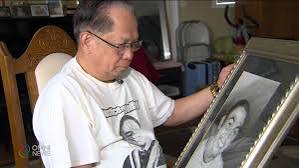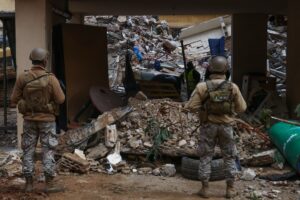
It has been two decades since a Toronto police officer shot and killed 17-year-old Filipino-Canadian Jeffrey Reodica. But the family continues to call for justice.
Jeffrey’s father, Willie, remembers the incident like it was yesterday.
“I know in my heart he can pull it through … but he did not,” he tells OMNI News while shedding tears.
On May 21, 2004, Jeffrey was shot by Det. Const. Dan Belanger three times in the back during a brawl between two groups of teenagers. He died three days later in hospital.
“We are so helpless … just because we are Filipino immigrants they can do that, we’re also fighting against the police, they used their authority to kill my son,” Willie said.
Over the past 20 years, it has been a constant struggle for family and friends to come to terms with what happened.
“I want to seek justice for my son. My son’s case is winnable, and he has done nothing wrong,” Willie said.
“I felt the pain of someone whose son died in a very violent way, in a foreign country, and felt we are being pushed aside in a corner. We’re so hopeless and simply don’t have strength,” said Jeffrey’s godfather Placido Mineque.
There were conflicting statements from witnesses and police officers who responded to the scene. The biggest of which was the presence of a knife allegedly used by Jeffrey against authorities, forcing Belanger to fire three gunshots to the back of the teenager. Initial eyewitness accounts said Jeffrey was unarmed and didn’t pose a serious threat to the officers.
The Special Investigations Unit (SIU) later cleared Belanger by calling the shooting justifiable. A coroner’s inquest was also conducted to look into conflicting testimony about whether Belanger and his partner, Det. Const. Allen Love, properly identified themselves to Reodica and whether a less lethal means of force, like a baton, could have been used.
Due to lack of funding, the Reodica’s have not been able to re-open the case, even though they’ve considered doing so. Initially, the lack of funding is what prevented the family from bringing their case to court when Jeffrey died.
University of Toronto criminology professor Patrick Watson believes a video or audio recording of the incident could have provided clarity to the arguments if the technology were available then. He cites the case of another immigrant, Sammy Yatim, where video evidence became a game changer in the conviction of the police officer who shot the teen twice during a confrontation on an empty TTC streetcar in 2013.
“If we had readily available cellphone video, if we had body-worn cameras, if there were surveillance cameras of whatever means, the questions about the authenticity of the police account versus the eyewitness accounts would be resolved to some degree,” Watson said.
“Maybe not to satisfy everyone, but at least you’ll have some understanding of how the officers reacted to Jeffrey and how they responded to this apparent herculean feat of doing a push-up and pulling out a knife as he had a 400-pound police officer around his back.”
In a statement to OMNI News, the SIU said it “takes great pride in the thoroughness in which it has conducted its investigations, and the Unit will continue to treat all cases with the utmost care.”
The statement went on to say, “Our investigators come with a great deal of experience in conducting investigations and undergo continuous training”.
The civilian police oversight agency also explained that to reopen an investigation, the Director has to be satisfied that there is new information available that could materially affect the outcome of an investigation, adding that the SIU has reopened cases when this criterion has been met.
While many improvements in police regulations and rules of engagement have been made since the shooting, Watson believes more reforms in the justice system are needed, including stronger civilian oversight in SIU and Toronto police and the use of more criminal courts to hear cases of police shooting.
“In that way, the public gets more, broader insights and perspectives on what’s going on with policing, what sort of decisions individual police officers made, scrutinize in very close detail policy decisions in a way that it informs the police on how they should be operating in the future,” Watson said.
“There must be total commitment to the process, racial sensitivity, empathy, community, being involved in community, in which they won’t usually be identified with, those are starting points,” said Bayami Abesamis, the Reodica family lawyer.
“Technology might also play a part in this, so you have bodycams, you have CCTV cameras, you have dash cams. Technology may play an important role in changing people’s perspective, those on the side of who might be victimized, and those who might be minded to let their prejudices get the best of them,” Abesamis said.
Watson said the element of racial bias has been and could always be present in violence-involved police shootings.
“People of colour are disproportionately affected by violence and police investigations, how they can incorporate themselves or find ways to address the problem of policing, is by getting informed as citizens, understanding their rights and interacting with the police, and petitioning the government to ensure their voices are heard,” Watson said.







